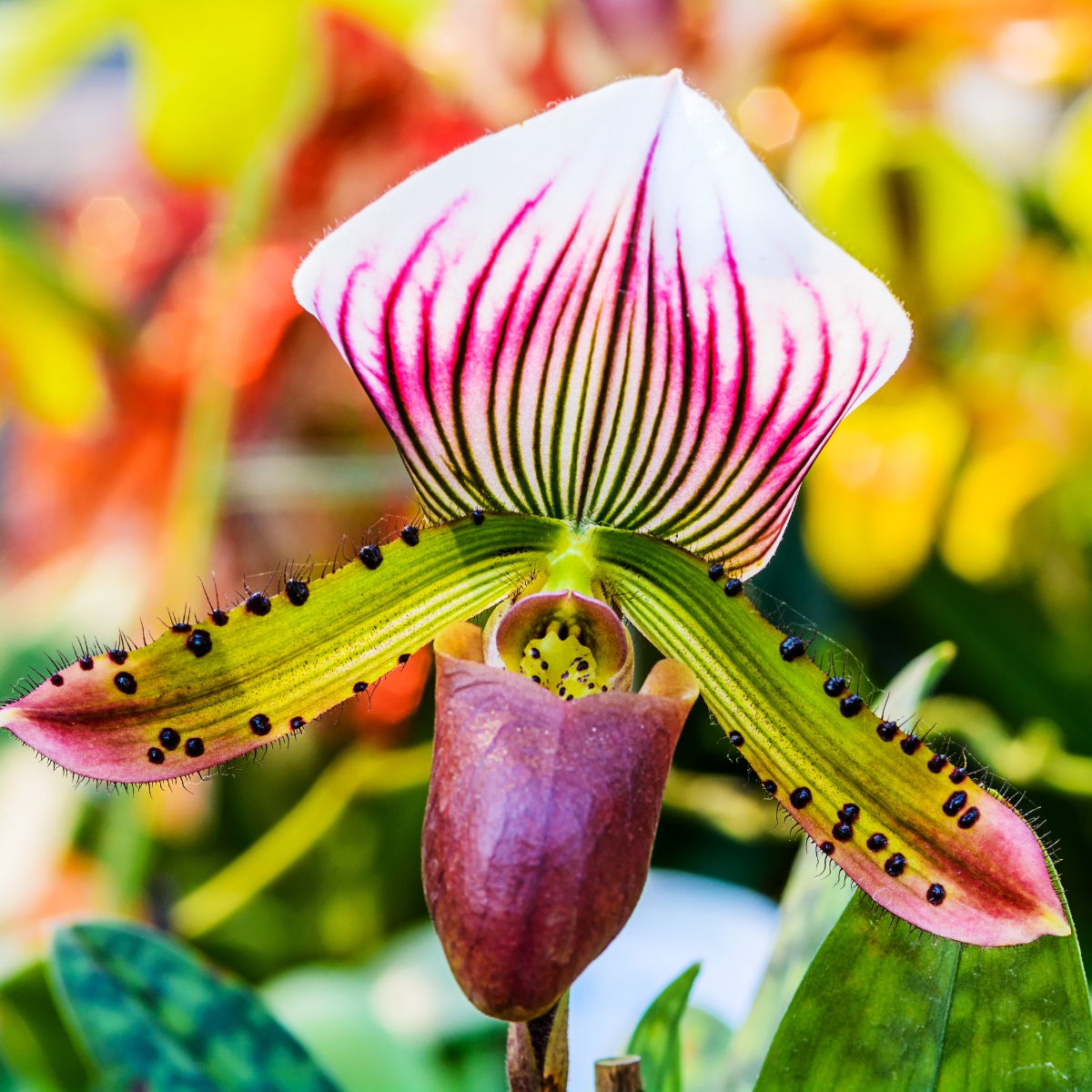
Earlier this year, we discussed two 2023 National Garden Bureau’s (NGB) Plants of the Year - this year's shrub (Spirea) and vegetable (broccoli). Orchids are the NGB houseplant of the year and the holidays are a great time to discuss this large group of flowering plants, which includes more than 28,000 species! Orchids are commonly available through garden catalogs and flower shops during the holiday season and make a great gift plant for the green thumb on your gift list.
According to fossil research, orchids have been around for approximately 100 million years. Centuries ago, these blooming beauties were considered a rare and luxurious item to own. However, by the 19th century, advanced growing techniques allowed various types of orchids to become more accessible to gardeners all around the world. And when you think about it, orchids really aren't rare, there are orchids are native to every continent around the world, except Antarctica.
 Orchid Types
Orchid Types
The vast orchid family includes several commonly cultivated species like Phalaenopsis or Cattleya as well as the Vanilla plant, one of the primary sources of this essential flavoring. Most orchid types in the market today are hybrids been bred for their gorgeous blooms and ease of care in the home.
- Phalaenopsis, aka moth orchid, are easy to grow with large long-lasting flowers.
- Cattleya, aka Queen of Orchids, can bloom year after year with proper care.
- Oncidium, “dancing lady” orchid, have highly modified ruffled blooms.
- Dendrobium is a large orchid group with many pastel-colored flowers.
- Vanda orchids have flat flowers and bloom several time a years with proper care.
- Cymbidium, aka boat orchid, has spikes of flowers and normally bloom in winter.
- Vanilla planifolia is the primary source for vanilla flavoring. Their flowers are small and only appear once a year.
- Paphiopedilums, aka slipper orchid, are easy to grow as a houseplant.
 Growing OrchidsIn nature, many orchids are epiphytes, meaning they attach to tree branches and take in nutrients from decaying bark and tropical rains. To grow orchids to our homes, most are planted in a bark rooting medium which lends itself to the unique epiphytic roots.
Growing OrchidsIn nature, many orchids are epiphytes, meaning they attach to tree branches and take in nutrients from decaying bark and tropical rains. To grow orchids to our homes, most are planted in a bark rooting medium which lends itself to the unique epiphytic roots.
Orchids are amazing plants because their visible roots can indicate how much moisture they need. If the plant needs more moisture, the roots will look silvery. Severely dehydrated roots look wrinkled and tan. On the flip side, dark and mushy roots are overwatered and beginning to rot. The goal is plump roots that are green after watering, returning to a silvery-green color as they dry off.
Orchids do not like “wet feet”, but they do appreciate a bit of humidity. Try placing your plant on a pebble tray to help increase the immediate atmospheric humidity around the plant.
Top Seven Orchid Tips
- Orchids love long periods of indirect light. Their best growth occurs when plants receive 10-16 hours of indirect light. A good test to see if the location in question is adequately lit for your plant is to hold your hand up and check the shadow. If the shadow is blurred, you’re good to go. If it is more distinct, the light level is too high.
- Several air roots are a good sign that your plant is actively growing. If possible, do not trim air roots back unless they are dead or rotten. Trimming roots can cause growth stunting.
- When repotting orchids, use clear containers with drainage to allow you to periodically check root health.
- Many types of orchids can stay vegetative (non-flowering) for years if they do not receive the right environmental signals to flower. If your plant is not blooming, try moving it to a north or east-facing windowsill in winter months to trigger a new flower spike.
- Do not get discouraged, Orchids can remain non-flowering/vegetative for 6-9 months before producing a new bloom. Patience is key!
- Phalaenopsis orchids need a period of cool night temperatures for 4-5 weeks before they will initiate flower spikes. Temperatures near 65° F at night are a good place to start for home growers. This can be as simple as placing the orchid near a north or east-facing window in winter months.
- After the orchid drops its last flower, you should trim the flower spike. ;You can trim it back in one of two ways depending on your plant’s situation. If the spike is still green, it means that your plant potentially has the energy to push out a new flowering spike from the current spike. It speeds up the process of re-blooming to simply cut the spike back one inch above the highest node, or bump, on the spike. For unhealthy, brown spikes, cut all the back to the base of the plant.
For more information on this year's featured plants, visit the National Garden Bureau. The National Garden Bureau recognizes and thanks Just Add Ice, an NGB member, as the author of this fact sheet, which is provided as an educational service with no limitations on its use.
Images from the National Garden Bureau.
-
Paphiopedilums, or slipper orchids, are an easy-to-grow houseplant.
-
Vanilla planifolia is a primary source for vanilla flavoring.